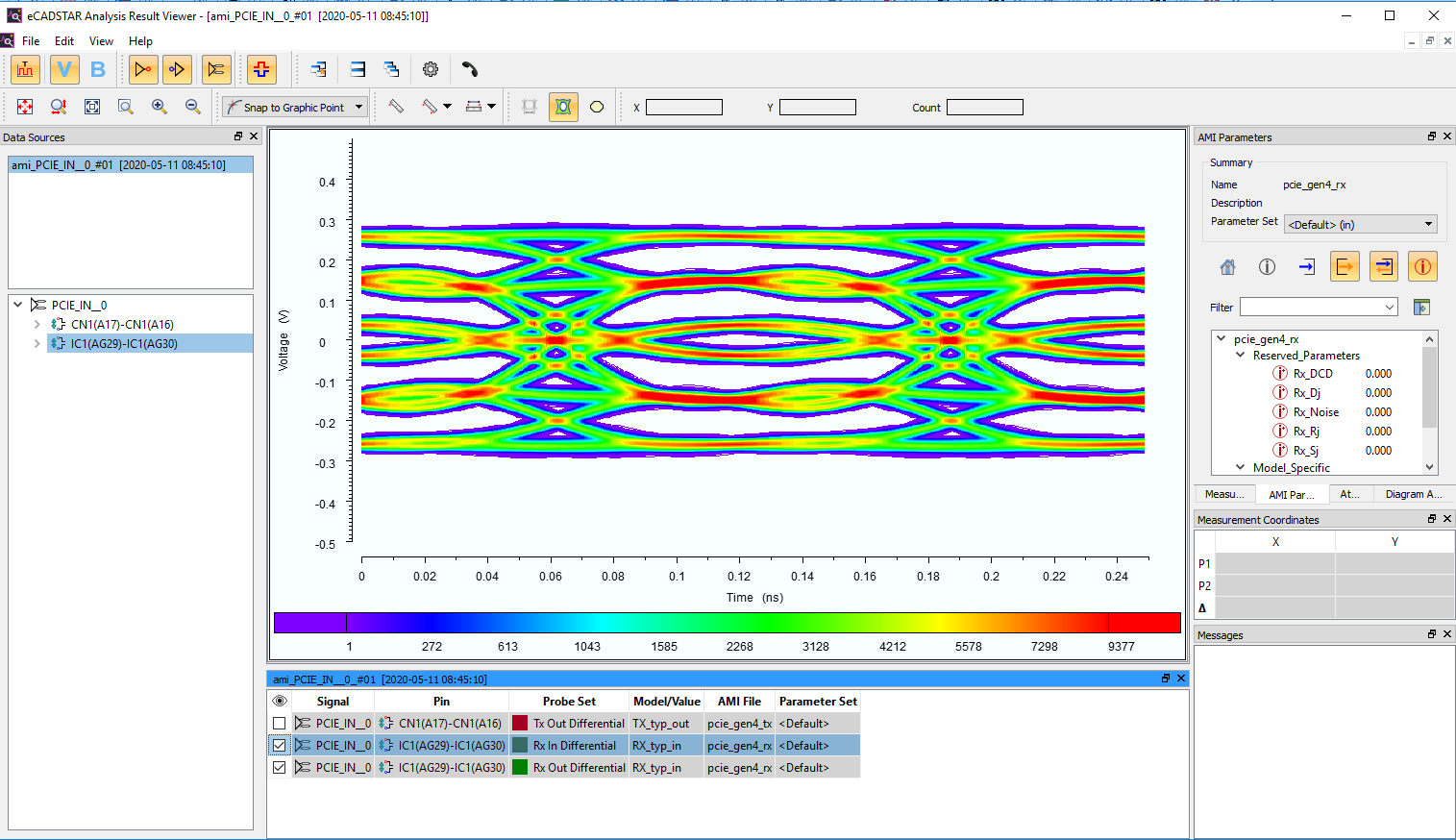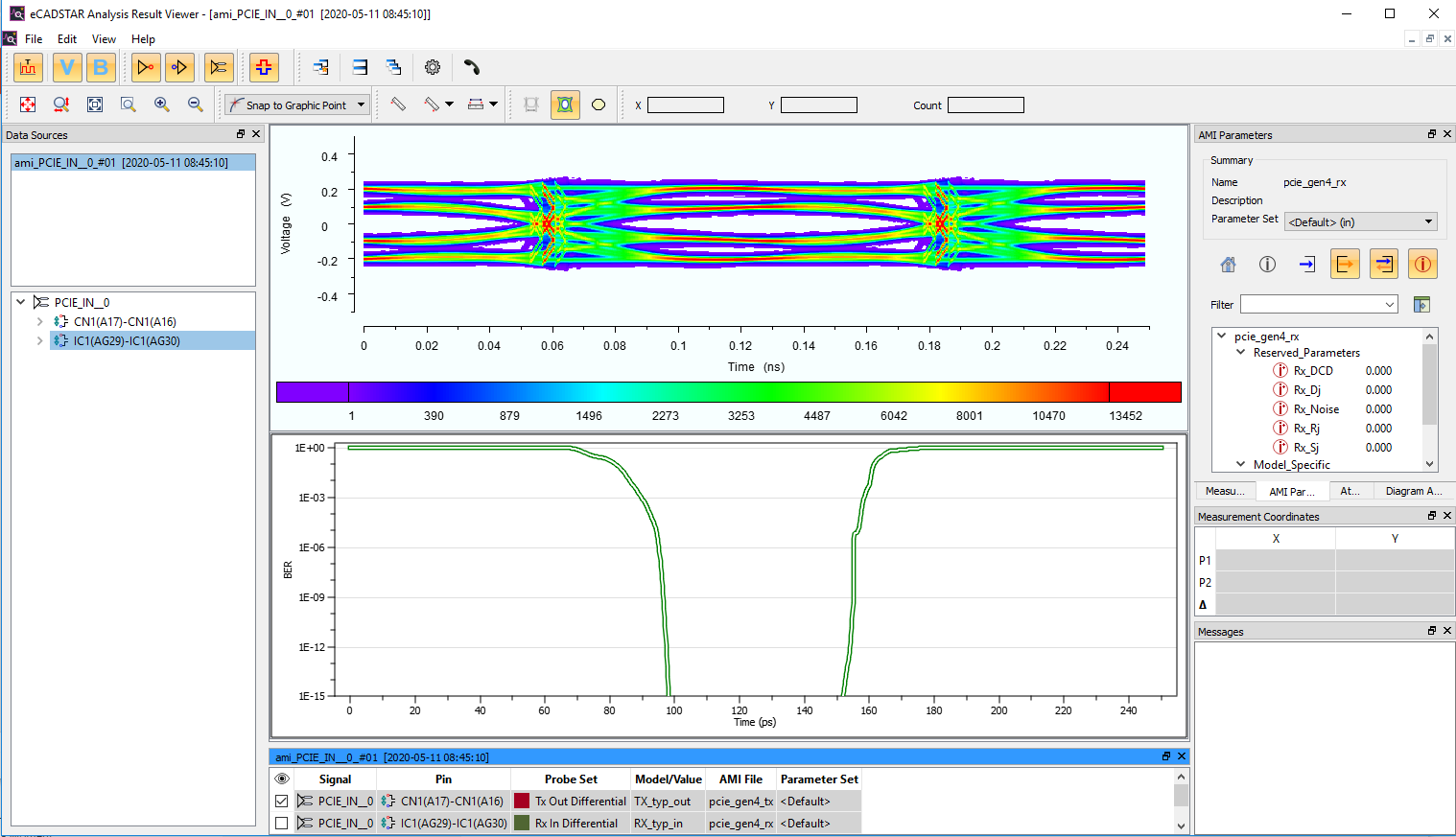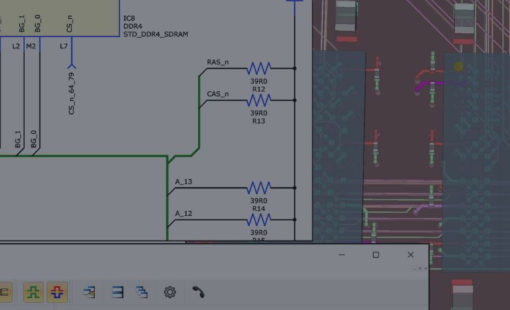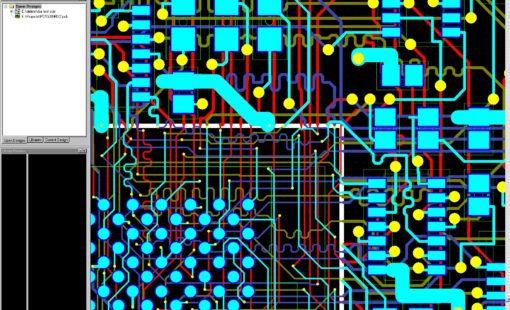
EYE-DIAGRAM OF AN AMI-SIMULATION

IBIS-AMI (AMI stands for Algorithmic Model Interface) models allow you to adjust buffer parameters (pre-/de-emphasis, equalization, and more) to optimize I/O channels for maximum performance.
A traditional IBIS model is an electrical description of buffer driving and receiving characteristics, excluding any programmable behavior like that present in SERDES transceivers. These include PCI Express, USB, SATA, as well as emerging memory standards such as DDR5.

eCADSTAR 2020 Release
Perform what-if analysis to optimize high-speed performance, to solve and verify critical PCB design requirements.
Testing and identifying the sources of signal integrity issues in a device, then fixing them, is a big challenge.
It is easy to miss a serious power integrity or EMI issue. This can be as simple as using the wrong kind of via to take power from one layer to another or as subtle as a local resonance that stops I/O getting enough switching power.


